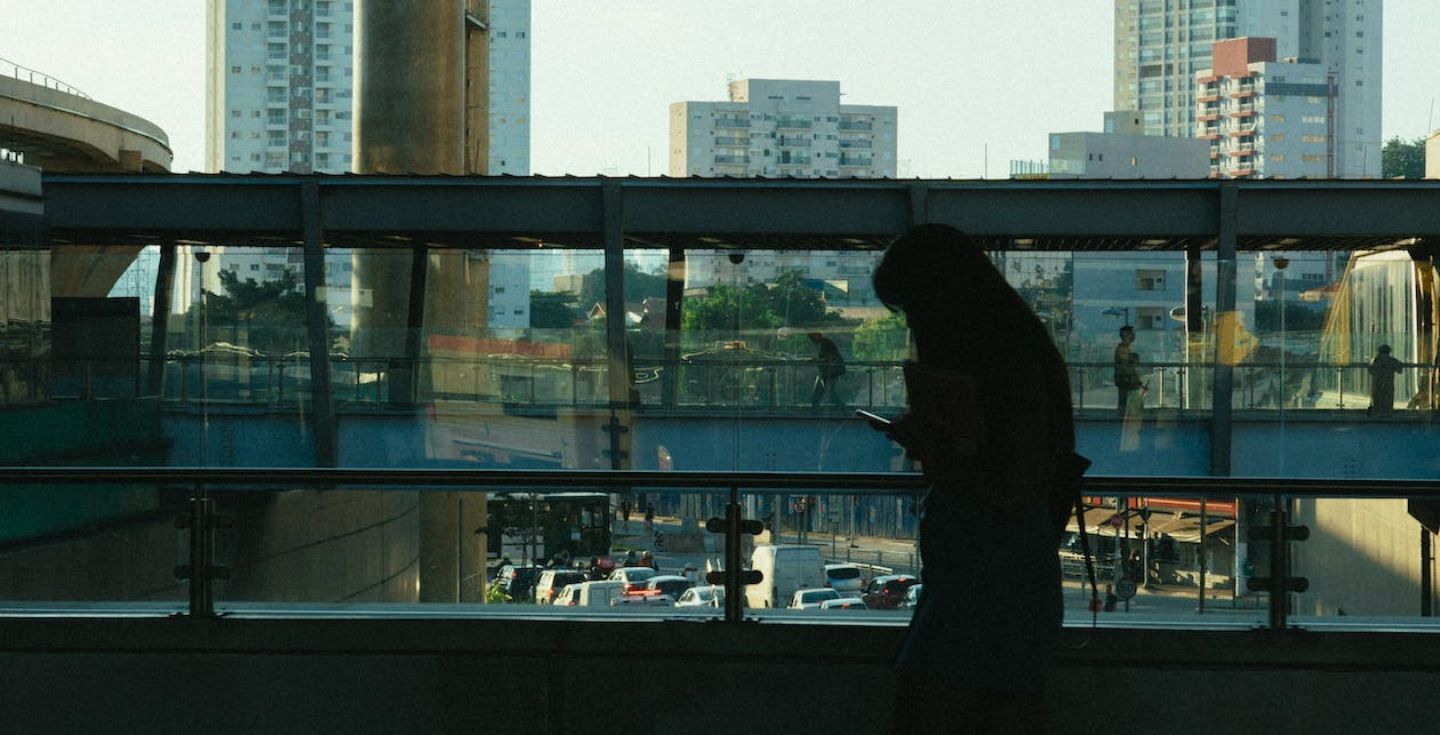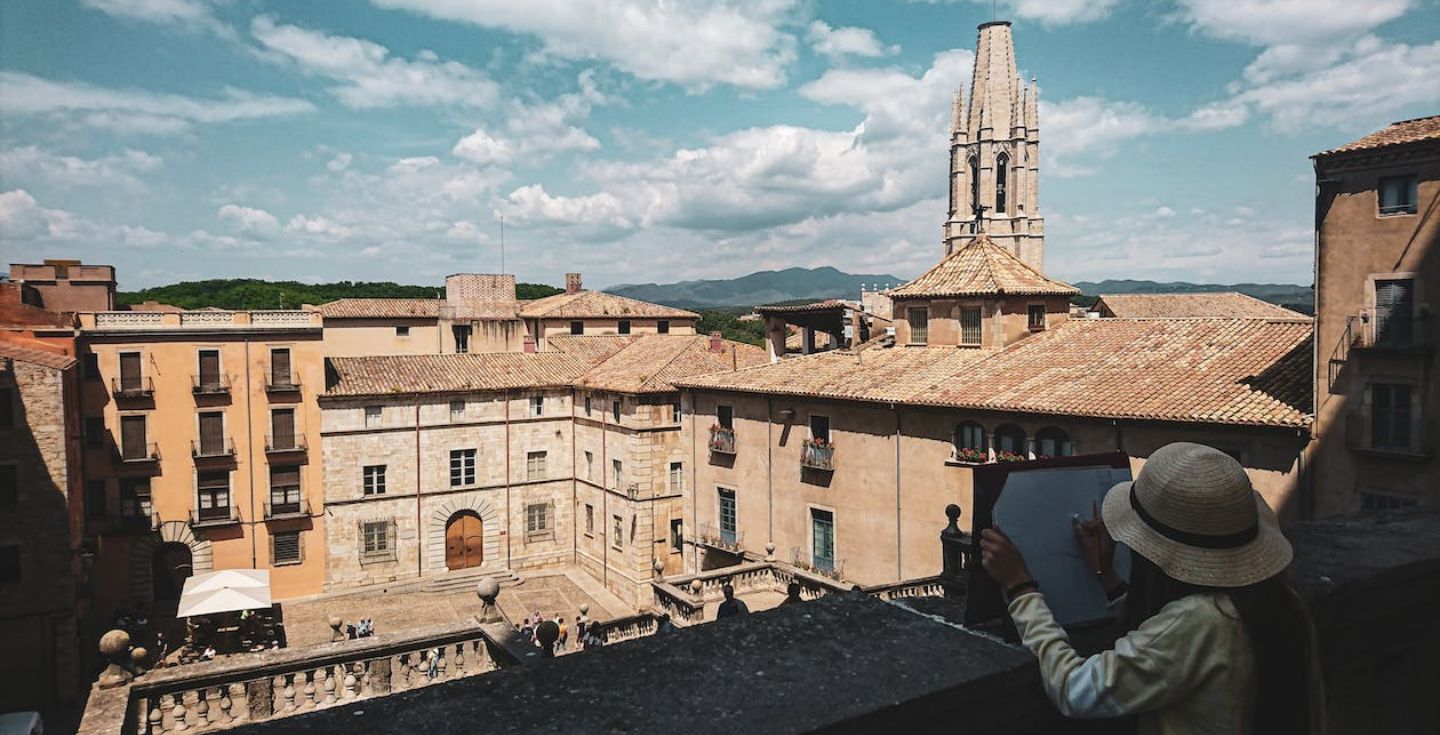Moroccan food: 10 things to try while in Morocco
Morocco is famous for it’s mouth watering cuisine, ranging from tagine and couscous to kaab el ghazal with a cup of mint tea.
Moroccan cuisine offers a harmonious blend of taste, color, and texture infused with centuries of cooking tradition. Warm, satisfying, and nutritious, it embodies the best qualities of both the land and the people who live in it. Tagine is the iconic Moroccan dish, famous around the world, but there’s so much more to discover.
Fragrant couscous, warming harira, and delicate desserts await the attention of hungry stomachs. And there’s always some strong Moroccan tea to accompany each meal. Whether you wish to grab a quick bite of street food or dine in luxury, let us be your guide to the range of dishes you can expect to find.
Savory delights
Savory foods form the core of Moroccan cuisine. Most popular meals combine a meat base with vegetables, olive oil, and spices. Let’s take a look at some of the most iconic dishes in Morocco.
1. Tagine
For many, tagine symbolizes the rich culinary heritage of the country. This hearty stew of meat, vegetables, and spices is prepared inside a distinctive conical clay cooking pot — in fact, it’s the pot that gives the dish its name.
Pass by a busy restaurant, either in the city or out in the countryside, and you’ll likely spot piles of these iconic red pots just waiting to be used.
Tagine is made with chicken or lamb, accompanied by a touch of olive oil, cooked vegetables such as peppers, onions, and potatoes, and a variety of spices like ginger, saffron, sesame seeds, and cumin.
Endless variation can be applied to this basic structure, and chefs will often use fruits such as apricots, lemons, or olives to bring out a rich sweetness within the stew.
The whole mixture is slow-cooked, traditionally over charcoal, for several hours. This provides an intensity of flavor to develop inside the cooking pot. Many restaurants and families have their own recipes for tagine, some of which have been handed down for generations.
Recommended restaurants:
- Safran by Koya – Rue Jbel Lakhdar, Marrakech
- La Sqala – Boulevard des Almohades, Casablanca
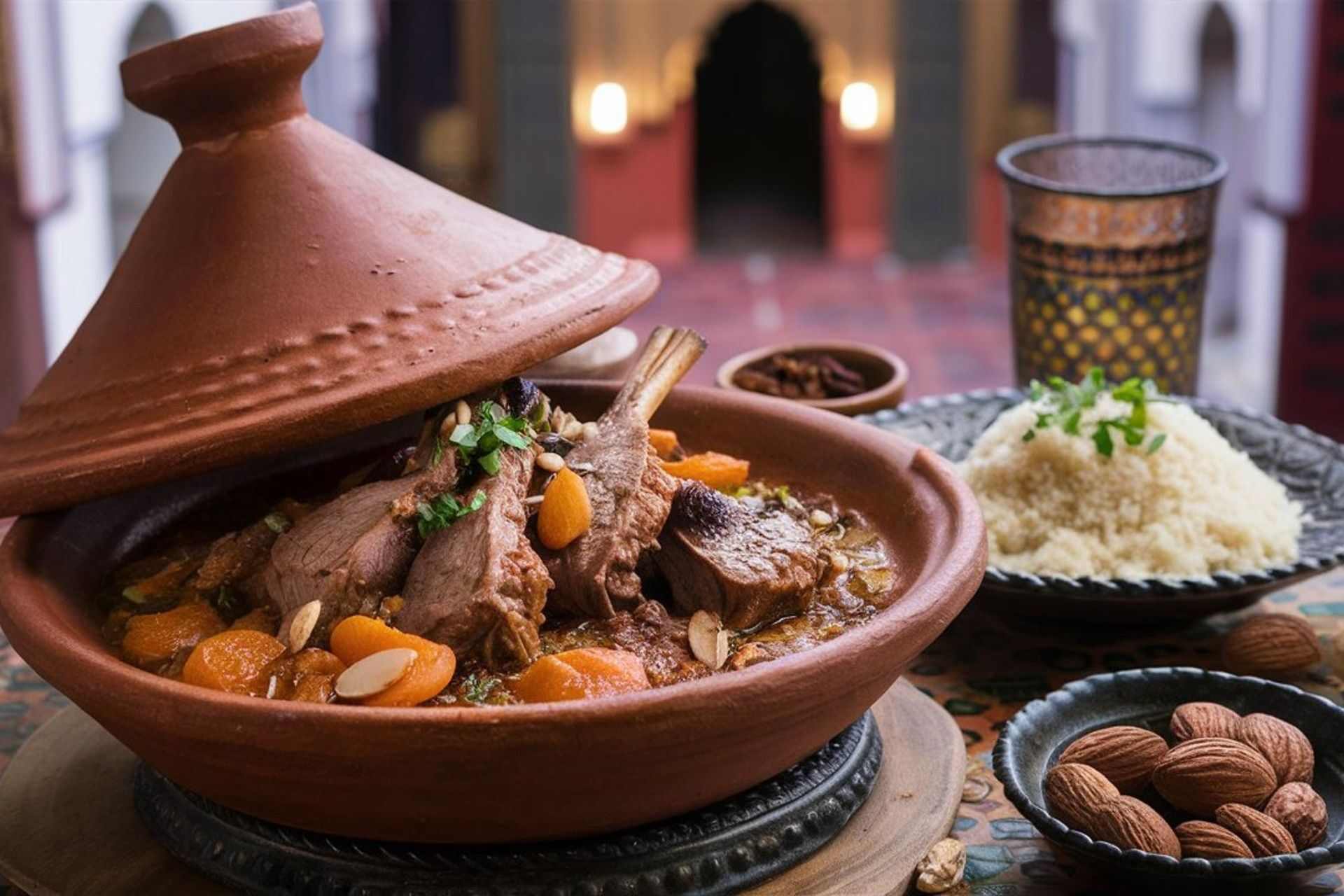
2. Tanjia
Tanjia (or tangia) is slightly different from tagine but still incorporates a similar cooking process. Just like tagine, a tanjia is a clay cooking pot from which the meal gets its name. Meat, fruit and spices are placed into a small urn-like pot before being cooked in a bed of ashes for several hours.
This method of cooking descends from the tanjia’s origins as a working man’s dish. The pot was small enough to be placed inside the ovens heating Morocco’s hammams (public bathhouses) and giving the delicious mixture inside as long as possible to stew during a morning of work.
Recommended restaurants:
- Chez Bejgueni – 21 Rue Ibn Aïcha, Marrakech
- Le Tanjia – Place des Ferblantiers, Marrakech
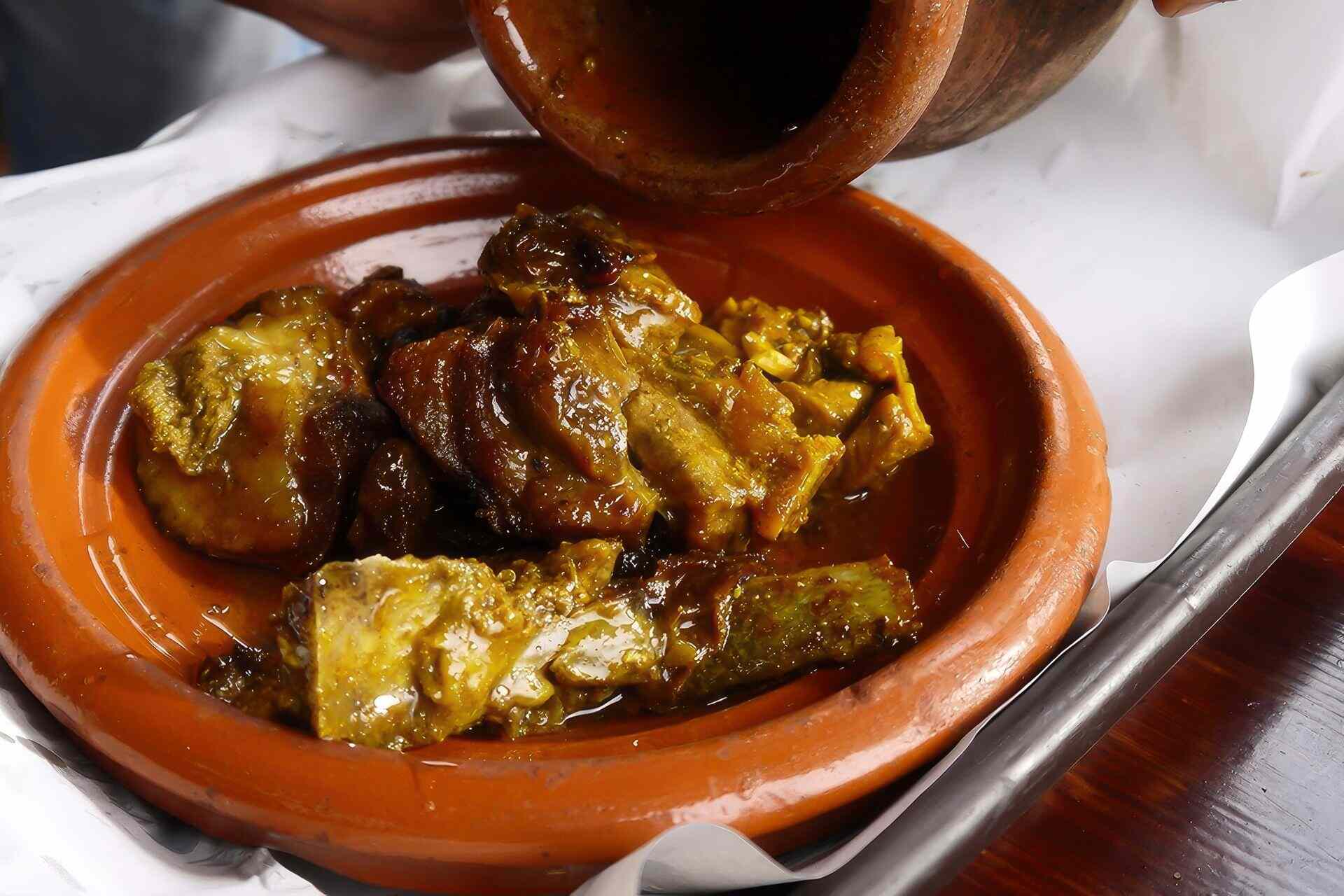
3. Couscous
Couscous is a versatile staple of Moroccan cooking, made of tiny rolled granules of semolina (milled durum wheat). This dish has been recognized in the country for hundreds if not thousands of years, and is often paired with tagine or tanjia. Couscous is great for soaking up the juices of the stew, making it the perfect compliment to Morocco’s traditional dishes.
The best way to cook couscous is by steaming. It’s often prepared with carrots, potatoes, and turnips to make a nutritious side dish, although with the addition of stewed meat or fish, it can easily become the main meal.
Just as with tagine, cooks sometimes use fruit and other sweet ingredients to change the character of the dish, giving it an extra dimension of flavor.
Recommended restaurants:
- Café Babouche Medina – 37 Rue des Banques, Marrakech
- Café Restaurant Dar L’hssira – 13 Rue Riad Zitoun el Jdid, Marrakech
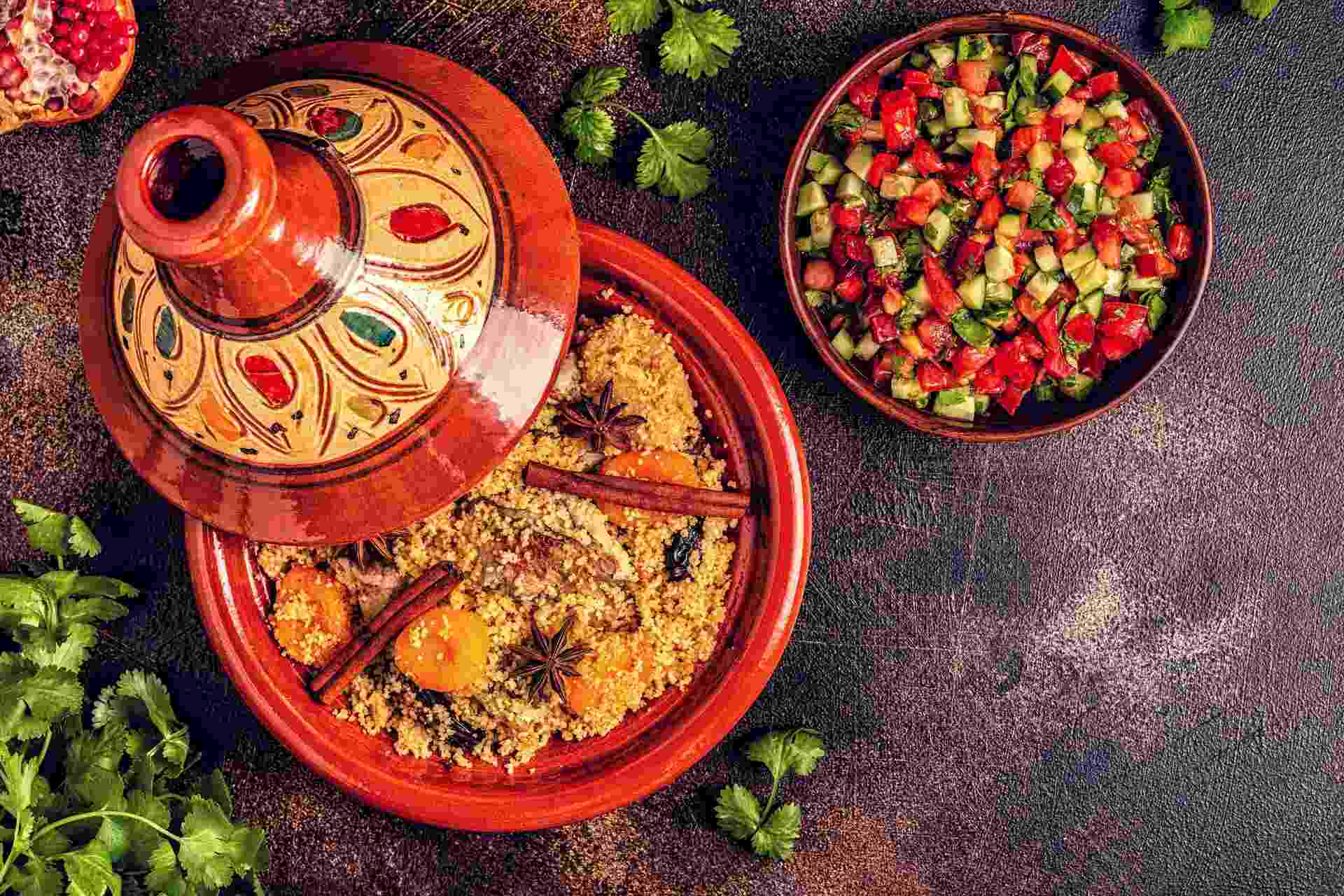
4. Harira
Harira is a hearty soup made with tomatoes, chickpeas, lentils, and a variety of spices like ginger and cinnamon. Thought to take its name from the Arabic word for ‘silk,’ which perfectly suits the smooth, satisfying texture of this warming dish. Harira is often associated with Ramadan, as it’s a favorite first meal to break the month-long fast.
This soup makes a great starter but is also filling enough to make a light meal, especially when thickened with rice, pasta, or pieces of lamb. It goes well with freshly prepared pita bread, which soaks up the thick mixture and adds texture to the dish.
Recommended restaurants:
- Restaurant Dar Cherifa Marrakech – 8 Derb Chorfa Lakbir, Marrakesh
- Adil Harira – 99 Rue Talaa Kebira, Fez
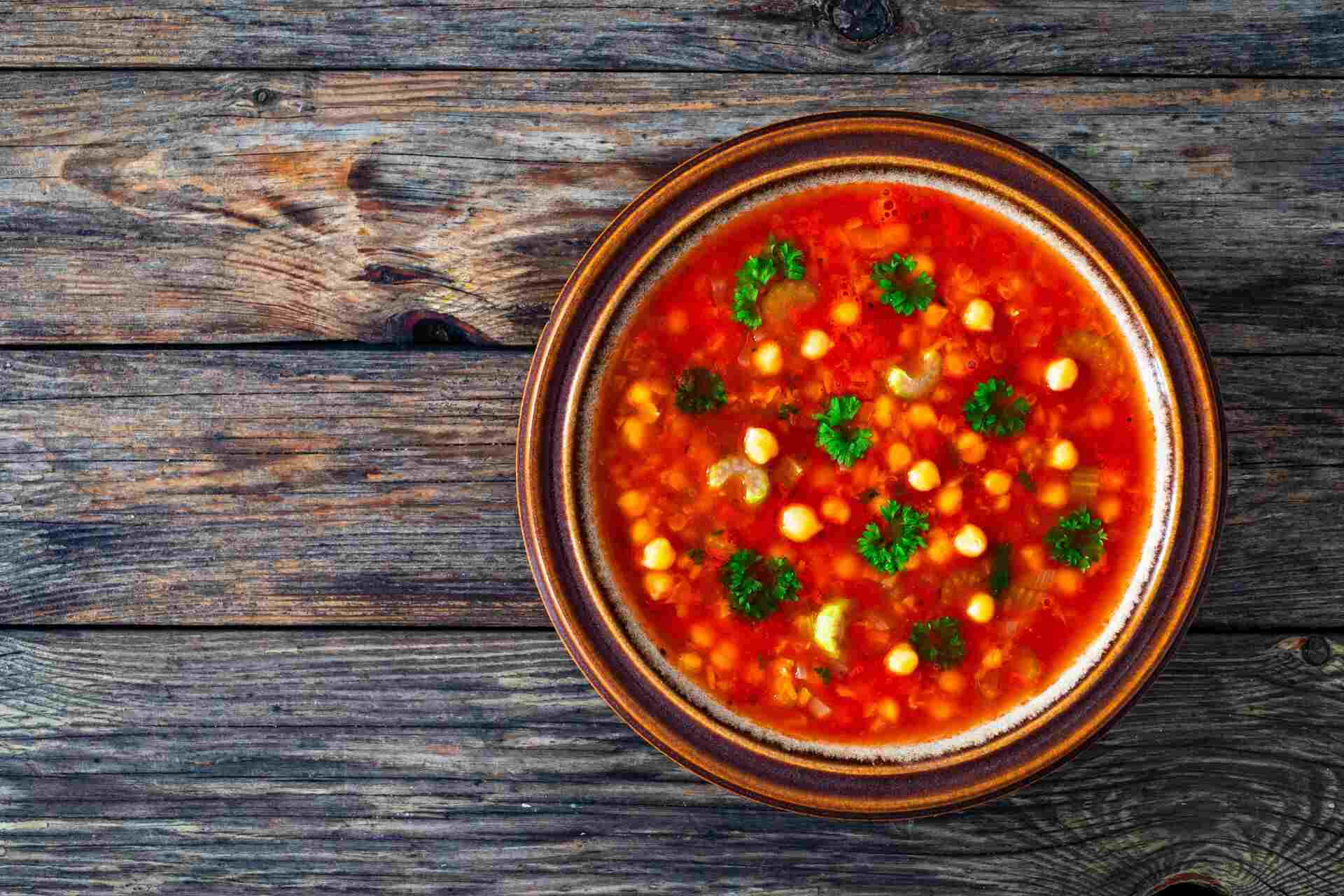
5. Zaalouk
A cooked salad made of tomatoes, eggplant, garlic, cumin and herbs. While the mixture of herbs can vary from recipe to recipe, parsley and cilantro are a popular combination.
Throw all these ingredients into a pan and let them reduce, resulting in a dish that can be thicker or more like a sauce depending on preference. Commonly served as dipping sauce alongside Moroccan bread.
Recommended restaurants:
- Restaurant Dar Lalla Khadra – 14 Sidi Ahmed Ben Khadra, Meknes
- Le Jardin Restaurant Marrakech Medina – 32 Souk Jeld Sidi Abdelaziz, Marrakech
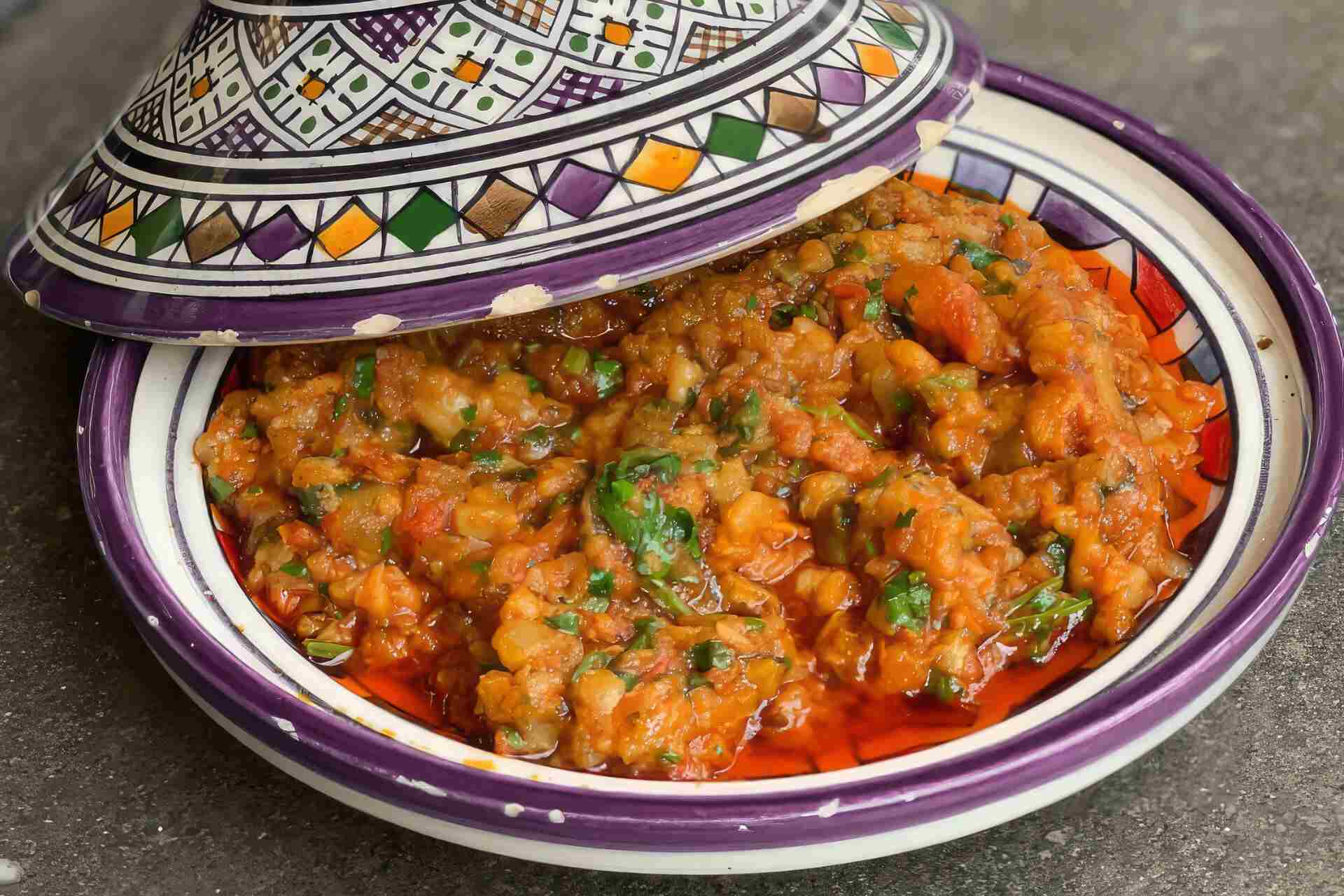
6. Chermoula
Chermoula is a relish (thick sauce) made with lemons, fresh coriander, parsley, cilantro, garlic and cumin. This tasty mixture is often served with fish caught fresh from the Atlantic but can also be added to soups, stews, chicken, and grilled meat for additional flavor.
It has a distinctive green color and is famous across North Africa, taking a slightly different form in each country.
Recommended restaurants:
- Restaurant Marocain Dar Safran – 9,Rue patrice lumumba, Av. Moulay Hassan, Rabat
- The Loft – 5 Rue Hajjali, Essaouira
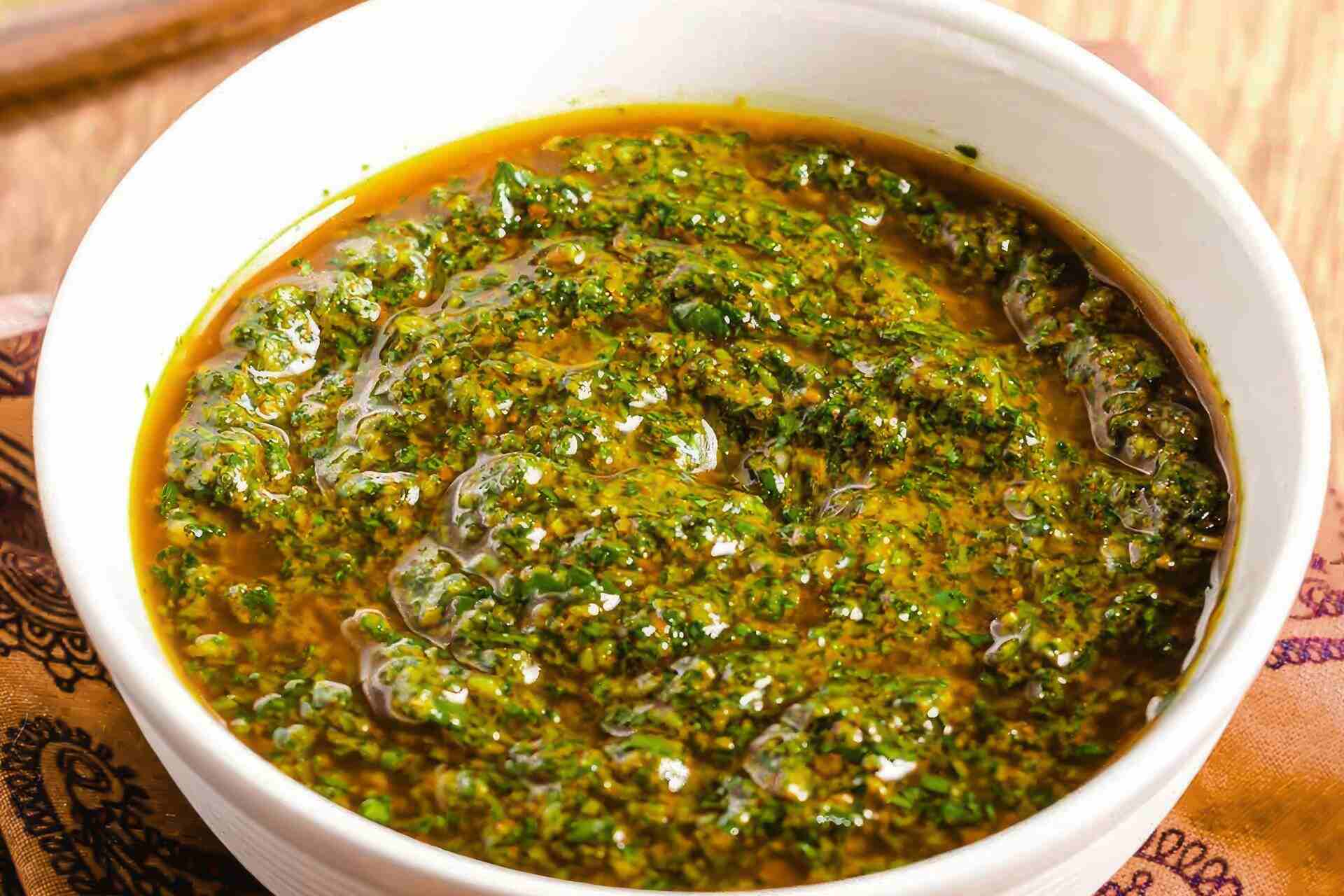
7. Pastilla
Thought to be related to the Spanish word meaning ‘little pastry’ or ‘pill,’ this meat pie surprises with its combination of sweet and savory flavors. In Morocco, pastilla is commonly made with a filling of chicken and almonds, wrapped up in a parcel of warqa dough (a type of dough very similar to filo).
The addition of spices such as ginger and cinnamon brings out the natural sweetness of the chicken and almonds. When combined with the crunch of the warqa dough, cooked to perfection in a skillet, this chicken dish offers a sweet and satisfying bite characteristic of Moroccan cuisine.
Recommended restaurants:
- Al Fassia Guéliz – 55 Bd Mohamed Zerktouni, Marrakech
- La Maison Arabe – 1 Derb Assehbi, Marrakesh
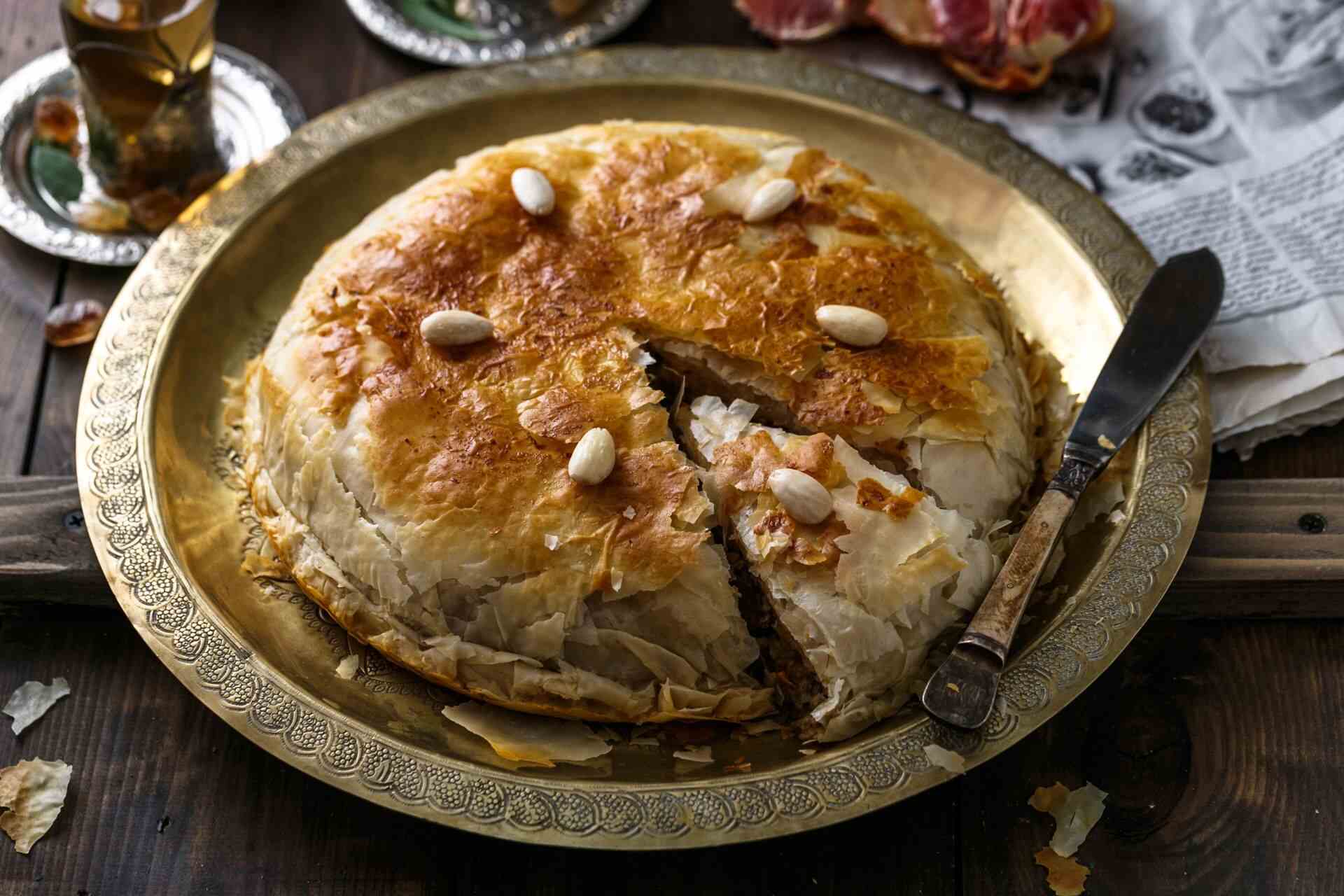
8. Khobz
Khobz, or Moroccan bread, is a common sight at Moroccan dining tables, and makes the perfect accompaniment to many of the dishes that make up the country’s cuisine. Crusty on the outside but coarse and fluffy within, it’s ideal for soaking up soups and sauces, ensuring that every plate is spotless by the end of a meal.
Where to find it?
Bakeries, restaurants, and shops across the country.
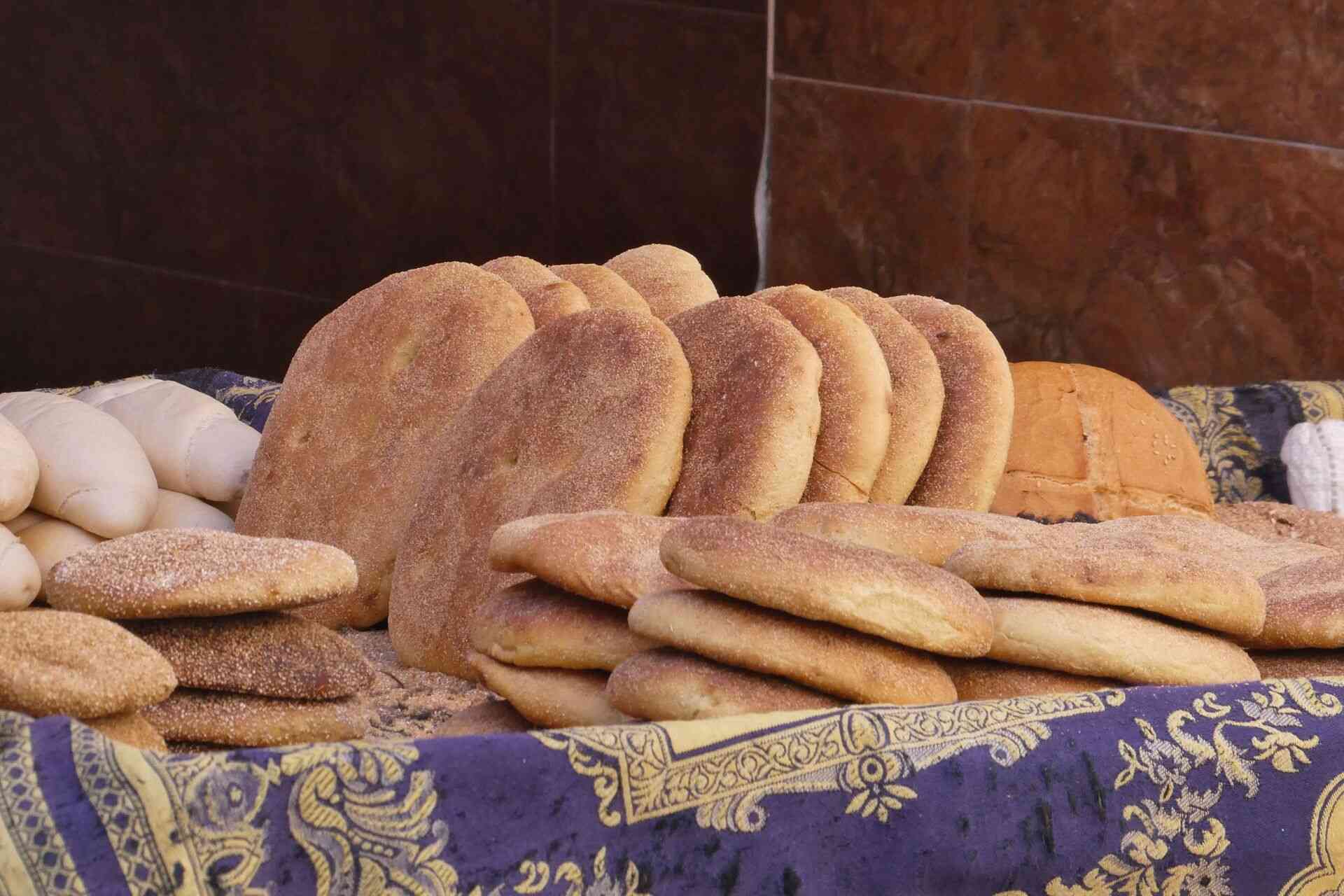
Sweet treats and tea
We all have a special place in our stomach for desert, and Moroccans are no exception. Let’s take a closer look at the most popular desert in the country, which is typically washed down with a steaming cup of tea.
9. Gazelle Horns (Kaab el Ghazal)
Also known by the French name Cornes de Gazelle, these delicate treats are made with almond paste encased in a thin layer of pastry. The magic ingredient? Orange blossom water, which gives them an elegant flavor and finish. Some bakeries go beyond this classic formula, adding different dimensions of taste such as rose, lemon juice, or lemon zest.
Recommended restaurants:
- Chez Brahim Restaurant – Jemaa el-Fnaa Rue Derb Dabachi 38, Fondek El Massioui Magasin 26, Marrakech
- Pâtisserie Corne de Gazelle – Rue Riad Zitoun el Jadid N137, Marrakech
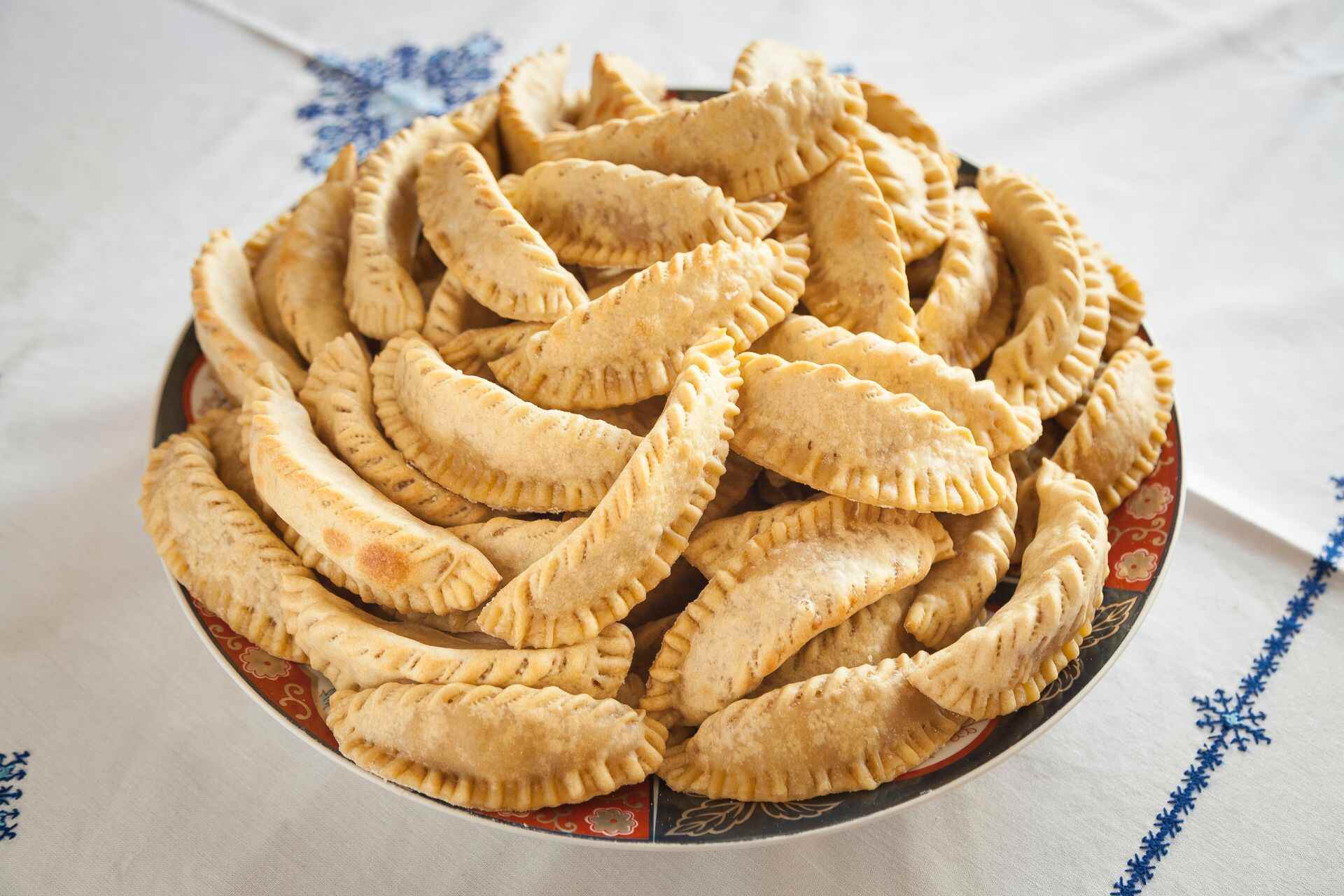
10. Moroccan Tea
Tea plays an important role in Moroccan culture. Mint tea is the local favorite, often sweetened with honey and flavored with various herbs. You’ll find this magical concoction in cafés and restaurants across the country.
Tea drinking is closely connected to the country’s native Amazigh (or Berber) culture. For these hard-working people, who often travel long distances, preparing and sharing tea is a ritual of warmth, friendship, and respect. The value of a hot, sweet drink in the expanse of the desert or mountains has led some to give Moroccan tea the name ‘Berber Whisky.’
The unique mixture of herbs that goes into a glass of tea often depends on the region. Native people know how to gather these ingredients and will readily use them to give their brew a distinct character. The act of pouring out the tea also matters —- the teapot is lifted high, seeking to recreate the bubbling power of a waterfall as the tea fills the glass.
Recommended cafés:
- Moroccan Teahouse Restaurant – 1112 Marrakech – N° 12 Place de La Kissariat Ben Youssef, Marrakech
- Café Des Épices – 75 Derb Rahba Lakdima, Marrakech
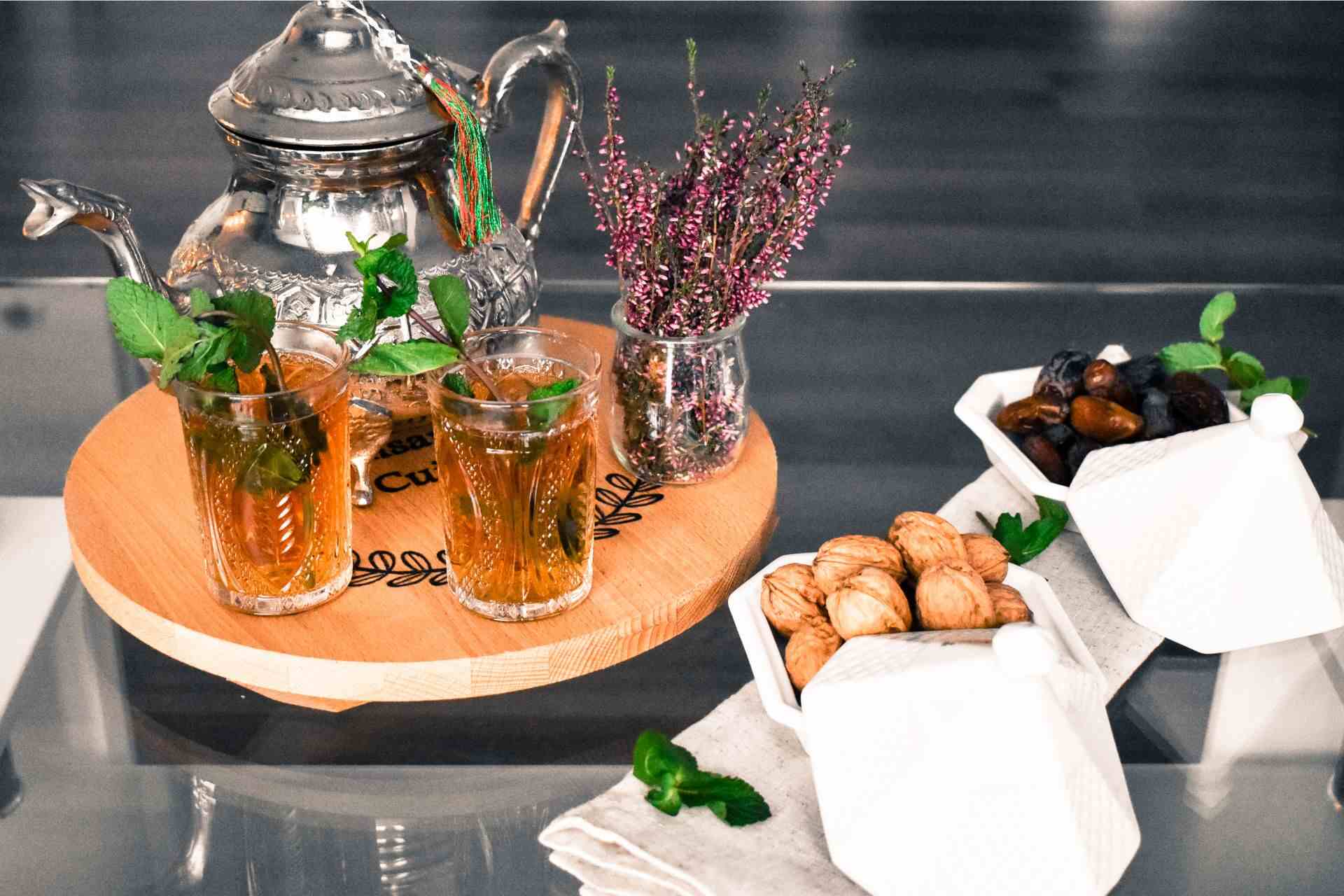
In Morocco, food and drink are great ways to discover the spirit of the people. At its best, it’s made with warmth, love, and an awareness of unbreakable cultural connections. We hope you can use our recommendations when visiting Morocco to learn about this wonderful culinary world.
Find your next meal in Morocco with Holafly
Not sure where to start your Moroccan food experience? Get an eSIM Morocco for easy mobile internet access in Morocco. Use it to find restaurants and recommendations on Google Maps or Trip Advisor, or simply ask the locals for tips with the help of a translation app.
Having a reliable way to stay connected makes taking on popular activities in Morocco much easier, and you’re sure to never lose connection with Holafly. All plans include unlimited data and 24/7 customer support in multiple languages, ensuring the best possible experience possible.





 Language
Language 


















 No results found
No results found





